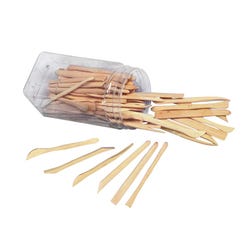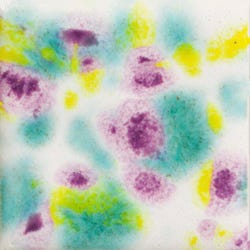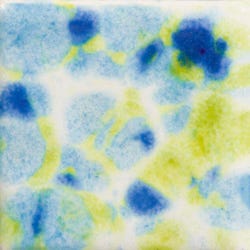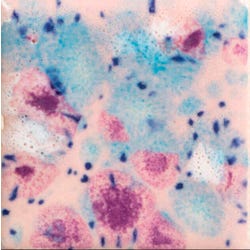Fold Over Critters

Description
Lesson Plan & Artwork by Eric Orr
Clay animals are often difficult to create and have them stand due to fragility of thin clay legs. Greek and Roman sculptors often created their standing stone figures with a prop (like a rock or tree trunk) joining the figure at the ankles or just having the sculpture lean against an object for stability. This lesson uses a technique of cutting the animal or figure out of a clay slab and folding it over a tube or cylinder. Thusly, legs are part of the animal from the start and the animal can stand.
Objectives
- Learn how to create imaginative or realistic clay animals using slab technique.
- Use the slab fold over method to enable textured animal sculpture to stand and be stable.
- Use “Mayco Jungle Gems Crystal Glaze” colors to enhance and color their creations.
Supplies Needed
Mayco® Jungle Gems™ Crystal Glaze, Field and Flowers Pint
Mayco® Jungle Gems™ Crystal Glaze, Mardi Gras Pint
Mayco® Jungle Gems™ Crystal Glaze, Jazz Notes Pint
Mayco® Jungle Gems™ Crystal Glaze, Gogh Iris Pint
Mayco® Jungle Gems™ Crystal Glaze, Pink Pixie Pint
Mayco® Rubber Retro Squares Designer-Texture Mat, 7 X 9 Inches
Sax® Low Fire Moist Earthenware Clay, White, 50 Pounds
Sax® Genuine Primed Canvas Pad, 18 x 24 Inches, White, 10 Sheets
Falcon Hardwood Clay Roller, 18 x 10-1/2 Inches
Jack Richeson™ Pro Needle Tool, 6-5/8 in, Aluminum Handle
Jack Richeson™ Boxwood Modeling Tool Set, 6 Inches, Set of 72
Kemper Tools® Fettling Knife, 4-1/2 Inches, Soft Pliable Steel Blade, Wood Handle
*Here are the supplies needed for this lesson plan for reference. Find a convenient carousel of shoppable products for this lesson below.
Standards
Standard #1: Generate and conceptualize artistic ideas and work.
Standard #2: Organize and develop artistic ideas and work.
Standard #6: Convey meaning through the presentation of artistic work.
Standard #8: Interpret intent and meaning in artistic work.
Standard #9: Apply criteria to evaluate artistic work.
Standard #10: Synthesize and relate knowledge and personal experiences to make art.
Standard #11: Relate artistic ideas and works with societal, cultural and historical context to deepen understanding.
Instructions
1
Elementary School Students: Study, select and sketch several animals as seen from the side as well as from the top. (Your sketch will look as if the animal is flat with the legs outstretched.)
2
Select the one you want to create from the slab of clay.
3
Roll out wedged Sax clay (2lbs.) into a slap 1/4” thick. Use two large paint sticks that come with a 5 gallon paint bucket. This makes a good 1/4” thickness guide.
4
Place your drawing on the slab and, use a ball point pen to trace over your drawn lines. Remove your paper drawing.
5
With a pin tool or a paper clip unfolded, cut your animal shape.
6
Middle/High School Students: For a challenge of making your splayed out animal resemble a letter of the alphabet (Choose a letter with “legs”, such as M, K, H, N, A, W etc.)
7
Texture your clay shape with texture mats, rollers or whatever is available in the classroom.
8
Using a paper towel tube or a 2” diameter pipe covered with newspaper, think of this as a “saddle” to place your shape onto, with legs hanging down. Add head, tail, other details.
9
Remove sculpture from tube or pipe when firm/dry enough to stand onto its legs.
10
Allow work to dry after signing it underneath.
11
Dry thoroughly and fire to 1945 degrees F, cone 04.
12
Glaze with 2-3 coats of Mayco Jungle Gems, refire to cone 05 1888 degrees F.









